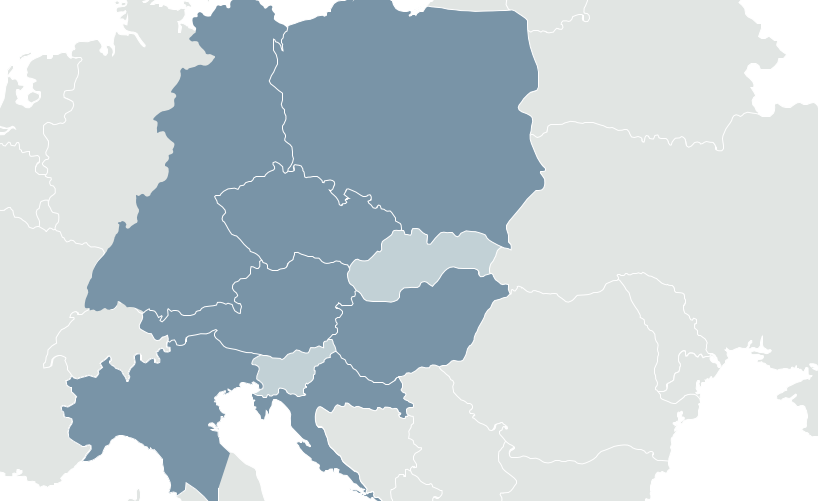Similarities and Differences in the HERCULES-CE partner countries
Citizen involvement in the energy transition is gaining momentum across Europe. One way to participate is by initiating local renewable energy projects. The HERCULES project is dedicated to supporting these local citizen-led initiatives. During the first six months of the project, a review of the legal framework for Energy Communities in the seven participating countries (Austria, Croatia, Czechia, Germany, Hungary, Italy, Poland) was conducted. Based on the review it can be concluded that energy communities in each of the countries are in different stages of development. Gaining an understanding of the current state and identifying key success factors in different models can support the development of strategies and guidelines.
Austria was one of the first countries to fully transpose the European law on Energy Communities, and thanks to the relatively easy establishment and favorable regulations, it now has a large number of energy communities. Germany, with its long tradition of energy cooperatives across various business areas, still faces uncertainty regarding the application and benefits of Renewable Energy Communities (RECs). As a result, the focus remains on the legal form of cooperatives rather than the definition of RECs. In Italy, Poland, and the Czech Republic, the legislative framework for energy communities is nearly complete, and an increase in the number of RECs is already visible. Meanwhile, Croatia and Hungary have not yet fully completed their legislative frameworks for RECs, and as a result, only a few energy communities have been established on paper, but are not yet operational.
Despite the differences, we can find some common features of RECs as well:
- Most countries offer two or three organizational models for energy communities, one of which is the Renewable Energy Community (REC) as defined in EU legislation.
- Besides the REC, the second most common organizational model is the Citizen Energy Community (CEC), which does not exclude fossil fuel-based electricity.
- In all countries, individuals, municipalities, and SMEs are allowed to become members of RECs, with some countries also permitting large companies to join.
- While RECs primarily focus on generating and sharing electricity (most commonly through PV plants), several countries also allow them to generate and distribute renewable heat.
- Financial support for renewable energy communities is available in five countries, covering both technical assistance for establishing RECs and financial support for investments.
- The most common legal forms for RECs include associations, cooperatives, non-profit organizations, and limited liability companies. However, some countries restrict REC establishment to non-profit organizations, thereby excluding limited liability companies.
- Geographical limitations on where RECs can operate exist, though these vary by country and are often linked to restrictions on connections at specific voltage levels.
The main findings are summarized in this table
|
|
Austria |
Croatia |
Czechia |
Germany |
Hungary |
Italy |
Poland |
|
Legislation / regulation for RECs complete |
Yes |
Only national laws |
National laws, regulations partly |
Regulation partly, grid use not possible |
Only national laws |
Yes |
National laws, regulations partly |
|
No. of EC models |
3 |
1 |
3 |
1 |
1 |
5 |
3 |
|
Technical support for RECs |
Yes |
No |
No |
Yes |
No |
Yes |
No |
|
Financial support for RECS |
Yes |
No |
Yes |
Yes |
No |
Yes |
Yes |
|
Territorial / spatial limits |
Grid level limit only |
No |
Only until 2026 |
Depending on EC model |
Grid level limit only |
Electricity market area |
Grid level limit, territory & district level |
|
Virtually sharing electricity |
Yes |
Yes |
Yes |
Only behind the grid connection point |
|
Yes |
Yes |
|
Minimal no. of members |
2 |
3 |
2 |
50 |
2 |
2 |
3 |
|
No of energy communities in country / region |
2470 202 (Burgenland region) |
3 |
50 |
951 cooperatives, with 38 in Thuringia 12 RECs |
8 |
168, of which58 Emilia Romagna region |
N/A |
